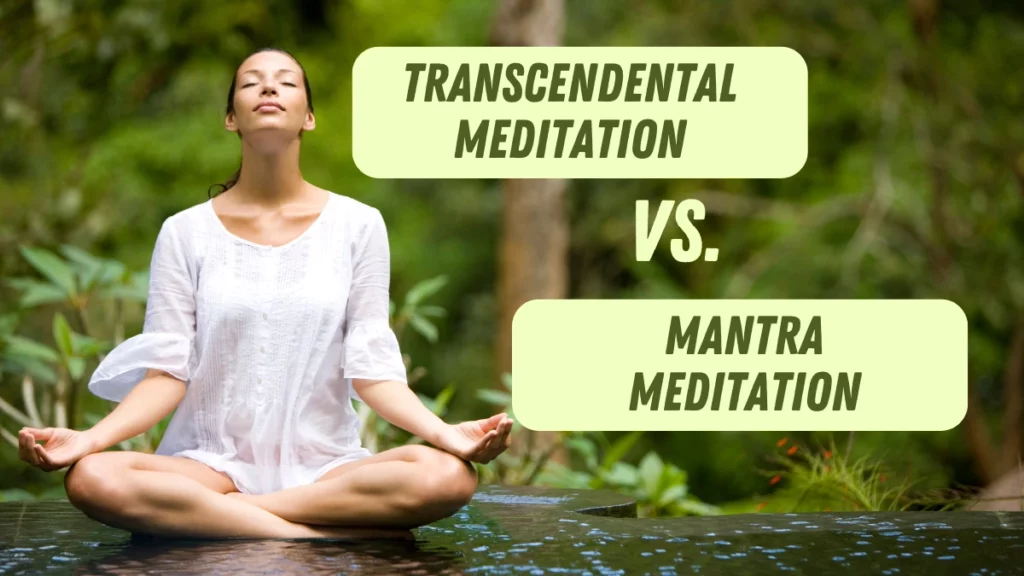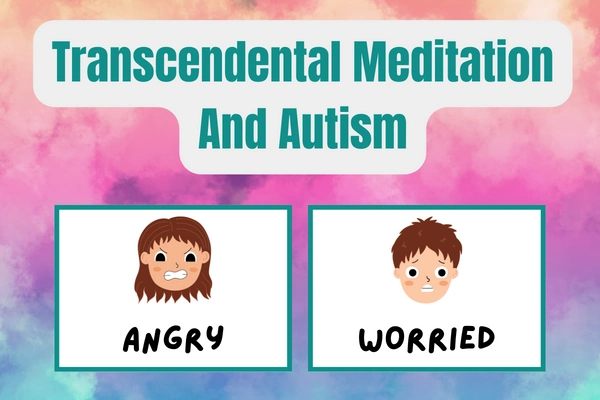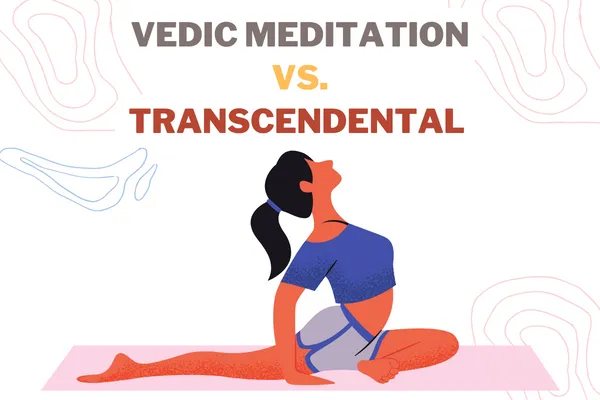Read More Meditation Blogs
Mindfulness And Meditation
Mindfulness has been shown to have many benefits for mental health, so it’s worth giving it a try!
Increases Focus And Productivity
Are you struggling to focus and get things done? Here’s how you can increase your productivity by making a few simple changes.
Improves Mental Clarity
Mental clarity is key to success in any area of life. and the key when it comes to productivity. So meditation gives it to you.
Promotes Self-Awareness
Are you working towards becoming more self-aware? If so, you’re on the right track to finding true happiness.
Explore Our Different Meditation Techniques
From mindfulness and mantra meditation to yoga nidra, our guide offers practical methods to help you achieve tranquility and mental clarity. Explore our comprehensive resources to find the perfect practice for your journey.
Explore Your Favorite Content On Mindfulness and Meditation
Our blogs provide readers with a curated selection of insightful articles focused on enhancing mindfulness and personal growth. From practical tips to in-depth discussions, these blogs offer valuable guidance to help you cultivate awareness and inner peace in your daily life.
Transcendental Meditation vs Mantra Meditation : Which Wins?
Top 20 Transcendental Meditation Celebrities: Discover Their Secrets to Inner Peace
Christian Meditation Chants: 5 Soulful Melodies and Profound Spiritual Benefits
Transcendental Meditation and Physical Health: 8 Ways to Revitalize Your Life
Exposing the Hidden Bond of Transcendental Meditation and Autism
Revealing the Difference Between Vedic and Transcendental Meditation [5 Aspects]
More About Different Types Of Mindfulness and Meditation
Mantra meditation involves the repetition of a specific word, sound, or phrase, known as a mantra, to focus the mind and achieve a state of deep relaxation.
This practice can be done silently or aloud, and the chosen mantra often holds personal or spiritual significance. By continuously repeating the mantra, practitioners can quiet the mind, reduce mental distractions, and promote a sense of inner peace.
Mantra Meditation
Meditation is a timeless practice that has been used across cultures for centuries to cultivate mindfulness, focus, and inner peace. Among the various forms of meditation, one particularly popular method is mantra meditation, which involves the repetition of a specific word, sound, or phrase to help focus the mind. The word “mantra” originates from ancient Sanskrit, meaning “instrument of the mind,” and the practice is designed to channel the mind’s energy into a peaceful state of awareness.
In mantra meditation, the repetition of the chosen mantra helps anchor the mind, allowing thoughts and distractions to fade away. Over time, the repetition becomes second nature, enabling you to enter deeper levels of relaxation and mindfulness.
The mantra serves as a tool to quiet mental chatter, redirecting attention inward. The ultimate goal of this practice is to still the mind and reach a state of inner peace and clarity, where you are fully present in the moment.
Choosing a mantra is a personal process and can greatly influence the effectiveness of the meditation. The mantra should resonate with you on a deep, personal level—something that holds meaning or evokes a sense of peace when repeated.
It can be as simple as a calming word, like “peace” or “love,” or a more traditional Sanskrit phrase like “Om” or “So Hum.” Experimenting with different mantras allows you to find one that feels right and brings you closer to the state of stillness and focus you seek.
With regular practice, mantra meditation can be a powerful tool for calming the mind, reducing stress, and promoting overall well-being. As you become more comfortable with the practice, you may find that the mantra naturally integrates into your daily life, providing a sense of peace even outside of meditation sessions.
This form of meditation can be practiced anywhere, making it an accessible and versatile way to incorporate mindfulness into your routine.
Transcendental Meditation
Transcendental Meditation (TM) is a unique form of meditation that is often associated with promoting deep inner peace and heightened self-awareness.
Unlike other meditation techniques that may focus on mindfulness or visualization, TM involves sitting comfortably with your eyes closed and silently repeating a specific mantra, or sound, for 20 minutes twice a day. The mantra used in TM is chosen specifically for each practitioner by a certified teacher, and its repetition allows the mind to settle into a state of restful alertness. This technique is designed to transcend ordinary thought, leading the practitioner to a state of pure awareness, often referred to as “transcendental consciousness.”
The practice of Transcendental Meditation was popularized in the 1950s by Maharishi Mahesh Yogi, an Indian spiritual leader who introduced the technique to the Western world. Maharishi claimed that TM could help individuals tap into a deeper level of consciousness beyond ordinary waking, dreaming, or sleeping states. According to his teachings, this transcendental consciousness is a state of pure awareness, free from mental distractions and stress. The practice, he believed, could lead to self-realization and a more harmonious life by aligning the mind and body with this deeper level of consciousness.
Since its inception, Transcendental Meditation has gained a global following, with millions of people practicing it regularly. Its popularity skyrocketed in part due to endorsements from high-profile celebrities like Oprah Winfrey, Jerry Seinfeld, and the Beatles, who have all credited TM with improving their mental clarity, creativity, and overall well-being. TM has since become one of the most widely practiced forms of meditation in the world, with dedicated centers in many countries offering courses and instruction in the technique.
While Transcendental Meditation has garnered praise from practitioners for its calming and restorative effects, it has also been the subject of scientific research. Some studies suggest that TM can reduce stress, lower blood pressure, and improve cognitive function, lending credibility to Maharishi’s claims. However, despite these promising results, some skeptics remain unconvinced, arguing that the benefits of TM may not differ significantly from other meditation practices.
Critics also point out that the cost of learning TM, which typically involves attending paid courses, could be a barrier for some people.
Metta Meditation
Metta meditation, also known as “Loving-Kindness Meditation,” is a powerful practice rooted in ancient Buddhist teachings that fosters thoughts and feelings of unconditional love, kindness, and compassion toward oneself and others.
The goal of this practice is to develop a deep, non-judgmental, and caring attitude toward all beings, transcending boundaries of race, religion, or personal relationships. Through Metta meditation, practitioners cultivate a heart of kindness and goodwill that radiates outward, beginning with themselves and eventually encompassing all of humanity.
The word “Metta” comes from the Pali language, an ancient Indian language spoken during the time of the Buddha, and it translates to “friendliness” or “benevolence.” In this context, Metta meditation is designed to nurture a sense of friendliness and love that knows no limits.
The practice traditionally begins with focusing on the breath to settle the mind, letting go of distractions, and cultivating a sense of inner calm. Once centered, the meditator then directs loving-kindness toward themselves, recognizing that self-compassion is the foundation of offering love to others.
As the practice progresses, the meditator expands these feelings of love and compassion outward.
The first step usually involves sending thoughts of love and goodwill to a loved one—someone for whom it is easy to feel kindness. This helps to generate strong feelings of warmth and compassion. Gradually, the meditator extends these thoughts to include acquaintances, strangers, and even individuals with whom they may have had conflicts.
The aim is to cultivate an attitude of care and compassion that is inclusive of all beings, regardless of personal history or relationships. This stage of the meditation can be transformative, helping practitioners break down feelings of anger, resentment, or negativity toward others.
Mindful Meditation
Mindful meditation is a practice that emphasizes staying present and aware of your thoughts, emotions, and surroundings without judgment. It’s a simple yet powerful tool that can significantly enhance both mental and physical health.
At its core, mindfulness meditation is about observing the present moment exactly as it is, without attempting to change or control what is happening. This practice can foster a sense of inner peace, calm, and emotional balance, even amid the stresses and challenges of daily life.
During mindful meditation, the practitioner typically sits in a comfortable position and focuses on their breath. By bringing attention to the natural rhythm of inhaling and exhaling, the mind is anchored in the present moment. As you continue to meditate, thoughts and feelings will inevitably arise, but the key is to observe them without attachment or judgment.
Rather than trying to push away or control these thoughts, you simply acknowledge them and gently return your focus to your breath. Over time, this practice teaches you how to break free from automatic reactions and cultivate a more thoughtful, responsive approach to life.
The benefits of mindful meditation extend far beyond mental relaxation. Numerous studies have shown that regular mindfulness practice can provide significant relief from stress, anxiety, and depression. It helps create a mental space where you can distance yourself from overwhelming emotions and gain clarity on how to manage them more effectively.
Additionally, mindfulness meditation has been found to improve concentration and cognitive function, making it easier to stay focused and present throughout the day. The increased awareness cultivated through mindfulness can also enhance creativity and problem-solving skills, offering a clearer perspective on challenges.
Chakra Meditation
Chakra meditation is a type of meditation that focuses on balancing the seven chakras, or energy centers, in the body. The seven chakras are located along the spine, from the base to the crown of the head.
Each chakra is associated with a different color, element, and quality. For example, the root chakra is associated with the color red, the element of earth, and qualities such as grounding and stability.
Chakra meditation involves visualization exercises in which you imagine each chakra as a spinning wheel of light. As you focus on each chakra in turn, you can help to bring them into balance, promoting physical, mental, and emotional well-being.
In addition to visualizations, chakra meditation may also involve mantra chanting, breath work, and other techniques.
Vipassana Meditation
Vipassana meditation is a form of Buddhist meditation that was popularized by the teacher S. N. Goenka. The word “vipassana” means “insight” or “clear seeing,” and the goal of this practice is to develop a clear understanding of the true nature of reality.
To do this, practitioners focus their attention on their breath and bodily sensations, observing them with detachment and mindfulness. Over time, they develop the ability to see things as they really are, without the distortions of opinion and emotion.
As a result, they become better able to cope with difficult situations in their lives. Vipassana meditation has been shown to be beneficial for mental and physical health, and it is now practiced by people all over the world.
Vipassana meditation can be an enormously helpful tool for anyone seeking to improve their mental well-being and find greater peace in their lives.
Yoga Meditation
Though often thought of as a physical practice, the heart of yoga is meditation. The word “yoga” comes from the Sanskrit root yuj, which means “to yoke” or “to unite.” In yoga meditation, the aim is to quiet the fluctuations of the mind and experience our true nature, which is pure consciousness.
Though it may seem difficult at first, with practice, anyone can learn to meditate. The first step is to find a comfortable position. Sitting upright with the spine straight is ideal, but you can also lie down or recline against a wall.
If your mind wanders, simply return your attention to your breath. With time and practice, you will be able to quiet the mind and experience the peace of yoga meditation.
Meditation Knowledge
When it comes to meditation, there is a lot of misinformation out there. Some people believe that meditation is a religious practice when in reality it is not affiliated with any religion.
Others think that meditation is only for people who are seeking inner peace, when in fact it can be beneficial for anyone. The truth is that meditation is a simple, natural technique that anyone can learn and use to improve their health and well-being.
Best of all, meditation is free and does not require any special equipment or training.
So if you’re looking for a way to improve your physical and mental health, why not give meditation a try?
FAQs On Mindfulness and Meditation Blogs
Find answers to common questions about mindfulness and meditation blogs, including tips on getting started, choosing practices, and integrating mindfulness into your daily life.
There are many ways that meditation reduces stress, but one of the most important is that it teaches you how to become more aware of your own thoughts and emotions. This increased awareness allows you to better understand how your mind works and why you react the way you do to certain situations. As you learn to control your reactions, you will find that your stress levels decrease.
Mindfulness meditation and transcendental meditation are helpful for sleep. Mindfulness meditation involves focusing on the present moment and letting go of thoughts that come up. This type of meditation can help you to relax and fall asleep more easily.
Transcendental meditation involves repeating a mantra (a word or phrase) in a relaxed state. This type of meditation can help to quiet the mind and promote deeper sleep.
Meditation helps mental health by reducing stress and anxiety. It also helps to focus the mind and increase awareness. When practiced regularly, it can help improve attention span, memory, and cognitive function.
For beginners, mindfulness meditation is recommended because it is easy to learn and practice. In mindfulness meditation, you focus on your breath and allow thoughts to come and go without judgment.
No, meditation and yoga are not the same. Yoga is a physical, mental, and spiritual practice that originated in India. Meditation is a technique for mindfulness and awareness that can be practiced without the need for any props or equipment. Though both meditation and yoga can be beneficial for your health and well-being, they are two distinct practices.
Mindfulness meditation helps manage OCD symptoms. Mindfulness meditation involves paying attention to the present moment, without judging or becoming attached to thoughts or emotions. This can help to break the cycle of obsessions and anxiety.





